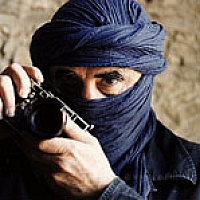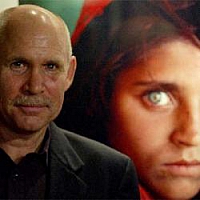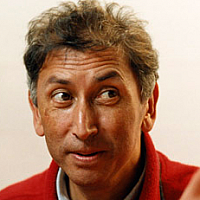
Magnum Print Room 63 Gee Street EC1V 3RS London Royaume-Uni
A cross roads between East and West, mountainous and landlocked, Afghanistan’s history is one of regular invasion and a long struggle for self definition. In the late 19th century, Afghanistan became a buffer state in "The Great Game" played between the Russian and British Indian Empires and has remained a pawn in international politics ever since. Since the late 1970s the country has suffered continuous and brutal civil war in addition to foreign interventions by Russia and America. Post 9/11 and the start of America’s war on the Taliban, Afghanistan has rarely been out of the news: in the UK media, announcements of British army losses resulting from tough fighting in Helmand province are an unfortunately familiar occurrence. With a new administration in the White House and a shift in foreign policy towards the country emerging, the world waits to see what direction the country will now take.
Afghanistan’s recent history is not just one of war and politics, although they do dominate. The photojournalists in Magnum’s membership have long travelled to this region and pictures of tough mountain fighters, burkha clad women and refugees are prevalent amongst those included in this exhibition, the title of which is a reference to a poem by exiled Afghan poet Khalilullah Khalili about the war in his land. Much has been made of the position of women in contemporary Afghan society, so it is interesting to contextualize this with work done by Eve Arnold in the 1960s on the customs of the veil in Islamic culture, the earliest images included in this exhibition. Photographers Steve McCurry, Chris Steele-Perkins and Abbas spent extended periods of time in the country from the 1970s, documenting the conflict and its impact, but also wider Afghan society; others such as Paolo Pellegrin, Thomas Dworzak, Alex Majoli and Christopher Anderson produced startling images on assignment during the American invasion in 2001.
Supported by the Sunday Times magazine, Eve Arnold travelled to Afghanistan in 1969 as part of her investigation into the customs of the veil. The women she photographed were shy and almost completely covered by the chador despite the fact that the veil had been outlawed in 1960. In her book In Retrospect, she describes her time there as one of her most happy: surrounded by awe inspiring beauty that was “both a dilemma and a delight” as she experimented with the pure primary of her Kodachrome colour film. Hosted by King Mohammed Zahir Shah, her experience contrasts hugely with that of other Magnum photographers a decade later. The two pictures included here reflect these calmer times: a bride illuminated in her finery amongst the shadows of a tent awaits the husband she has never met, and a young turbaned boy poses proudly upon a pile of rubble.
Steve McCurry is best known for his 1984 photograph of the Afghan girl: a refugee with piercing green eyes who first appeared on the cover of Time magazine. However, his career was launched when, wearing native clothing, he crossed the Pakistan border into rebel-controlled Afghanistan just before the Russian invasion. When he emerged, he had rolls of film sewn into his clothes that contained some of the world's first images of the conflict. Hugely ethnically diverse, this fiercely independent highland nation remains a source of inspiration for McCurry to this day. The more contemporary images included here all appear in his 2007 publication with Phaidon In the Shadow of the Mountains.
Iranian photographer, Abbas, has spent a lifetime exploring religion, with Islam post 9/11 the topic of his most recent book launched this June with Thames & Hudson. He has produced numerous iconic pictures in Afghanistan, some of which feature in this new publication. Perhaps most iconic is his surreal scene of a seated Mujahid fighter framed by a bunk bed against the Afghan landscape. Also included is a lesser known colour image from 1986 of an Afghan woman, whose beautifully embroidered traditional dress, donned for the anniversary of the Russian invasion, contrasts with the cold metal of the Kalashnikov cradled in her arms.
British-based photographer, Chris Steele-Perkins, travelled many times to Afghanistan in the Nineties, producing a record of a people that is broader than the conflict of which they bear the scars. In the 2001 book of his travels, his heroic photographs are reproduced alongside of poetry by the Afghan writer Sayd Bahodine Majrouh, producing more meditative impression than a straight documentary. Amongst the selection included here is an image of people trying out artificial limbs – injury from land mines being an unfortunately prolific occurrence in the wake of the Soviet war. In contrast, daily life amongst the troubles is represented by his picture of a curious gambling game involving eggs, it’ participants absorbed with their covered or balding heads downturned.
Thomas Dworzak’s found portraits of Taliban fighters confound our preconceptions of these fiercely uncompromising men. The beautification, through make-up and the additional layer of hand colouring on these images, serves as a counterpoint to the aridity of their strict Muslim doctrine.
Long interference by external powers in Afghanistan has formented the security situation from which the country now suffers. With a geography of mountains and remote valleys, Afghanistan will always remain unruly and hard to govern, and it is this impassability which remains its strength and weakness. Over the years it appears to have been set in aspic with attempts at modernity crumbling in the chaos wrought by war and the twisted Islamic doctrine of the Taliban. However, its people, with their old traditions and beliefs, and the andscape itself, continue to exert a remarkable pull on the imagination. Both despite and because of its troubles Magnum’s photographers keep going back. Chris Steele-Perkins describes the lure of the country thus: "The experience of being there works its way into one's being; an infection of the soul demanding that you return."






